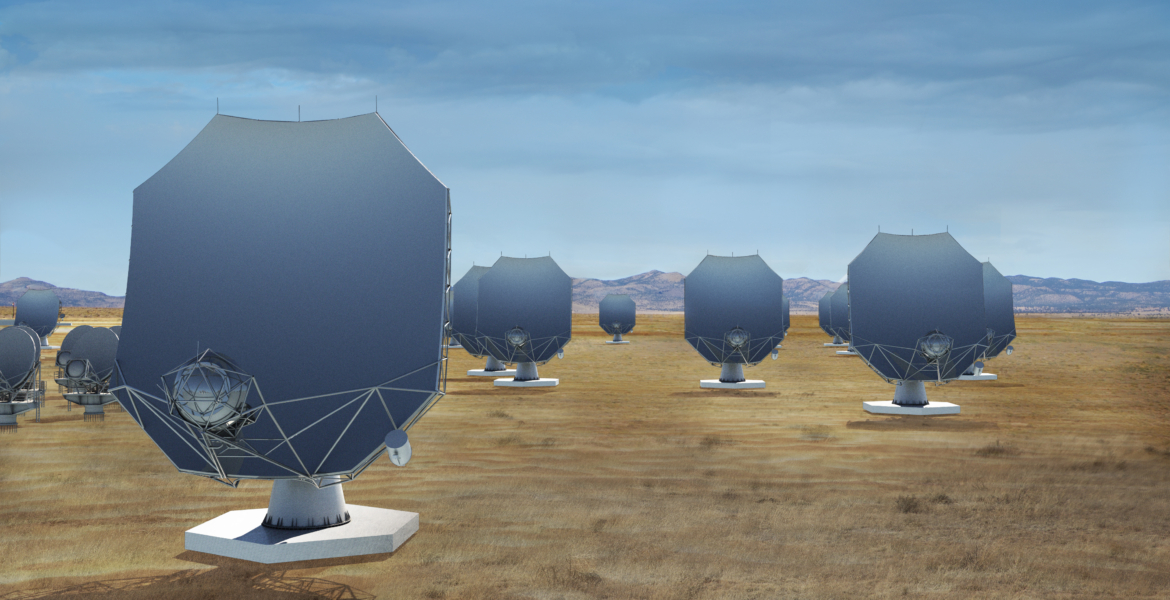The U.S. National Science Foundation National Radio Astronomy Observatory (NSF NRAO) has received funding to expand its study of an invisible—and crucial—scientific and technological resource: the radio spectrum.
Recent News
Largest Oort Cloud Comet Ever Observed Reveals Its Secrets with ALMA’s Powerful Gaze
A team of astronomers has made a groundbreaking discovery by detecting molecular activity in comet C/2014 UN271 (Bernardinelli-Bernstein)—the largest and second most distantly active comet ever observed from the Oort Cloud.
Unusual stellar nurseries near our galaxy’s center puzzle scientists
New research led by Dr. James De Buizer at the SETI Institute and Dr. Wanggi Lim at IPAC at Caltech revealed surprising results about the rate at which high-mass stars form in the galactic center of the Milky Way.
Next-Generation Very Large Array Antenna Design to be Used By German Astronomers

Bavarian state government and regional universities fund construction of antenna on Germany’s highest peak
The U.S. National Science Foundation National Radio Astronomy Observatory has announced a significant collaboration with the Bavarian State Government to construct a cutting-edge radio telescope atop Germany’s highest mountain. This radio telescope will use the design of the proposed NSF NRAO’s Next Generation Very Large Array (ngVLA).
Known as the Wetterstein Millimeter Telescope (WMT), this antenna could interface with the NSF NRAO’s proposed ngVLA, while also having the capability to function independently. The WMT will be strategically positioned at the summit of the Zugspitze, offering exceptional observing conditions due to its high altitude and clear skies. This location can significantly improve the antenna’s sensitivity and resolution across the millimeter wavelength range, allowing for groundbreaking astronomical observations.
The project is funded by the Bavarian State Government, as announced in their recent press release. “The Wetterstein Millimeter Telescope will be an exciting research facility and further opens up the possibility of one day establishing a global ngVLA network,” said ngVLA Project Scientist Eric Murphy of the NSF NRAO. “Its placement on the Zugspitze provides unparalleled observing conditions, which can enhance the overall sensitivity and resolution of the ngVLA. This may enable astronomers to conduct unprecedented research across a wide range of astrophysical topics.”
The WMT is not only a significant scientific achievement in its own right, but also has the potential to act as a catalyst for the development of a larger, dedicated interferometric array. Such an array, which could potentially include up to 16 antennas, would leverage the considerable astronomical expertise and infrastructure already present in Germany, and could expand the NSF NRAO’s proposed ngVLA reach and scientific impact.
About NRAO
The National Radio Astronomy Observatory is a facility of the U.S. National Science Foundation, operated under cooperative agreement by Associated Universities, Inc.
This news article was originally published on the NRAO website on February 10, 2025.
Recent News
NSF NRAO Leads Critical Spectrum Studies to Safeguard Radio Astronomy
The U.S. National Science Foundation National Radio Astronomy Observatory (NSF NRAO) has received funding to expand its study of an invisible—and crucial—scientific and technological resource: the radio spectrum.
Largest Oort Cloud Comet Ever Observed Reveals Its Secrets with ALMA’s Powerful Gaze
A team of astronomers has made a groundbreaking discovery by detecting molecular activity in comet C/2014 UN271 (Bernardinelli-Bernstein)—the largest and second most distantly active comet ever observed from the Oort Cloud.
Unusual stellar nurseries near our galaxy’s center puzzle scientists
New research led by Dr. James De Buizer at the SETI Institute and Dr. Wanggi Lim at IPAC at Caltech revealed surprising results about the rate at which high-mass stars form in the galactic center of the Milky Way.
